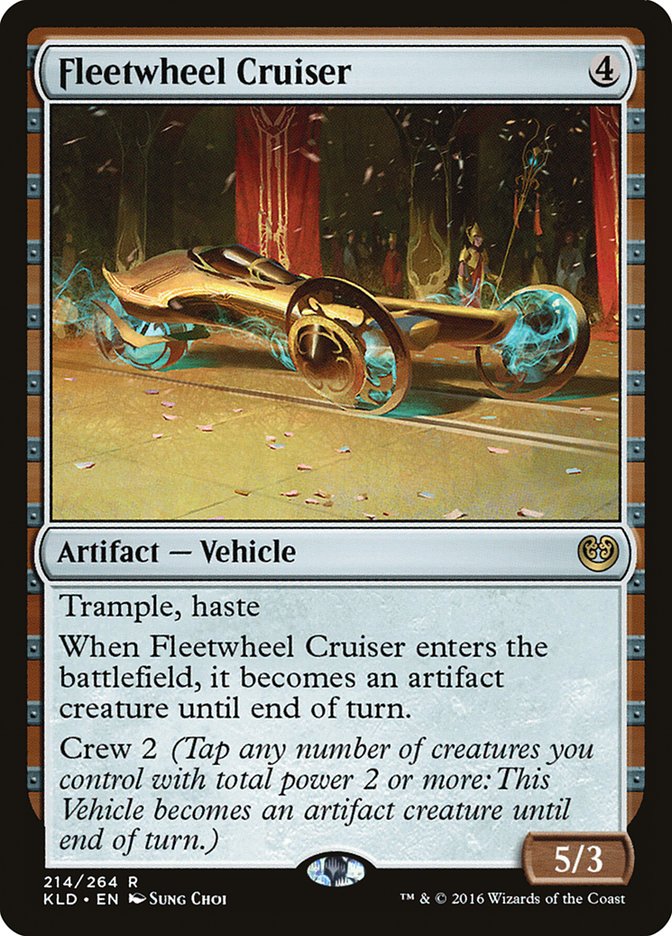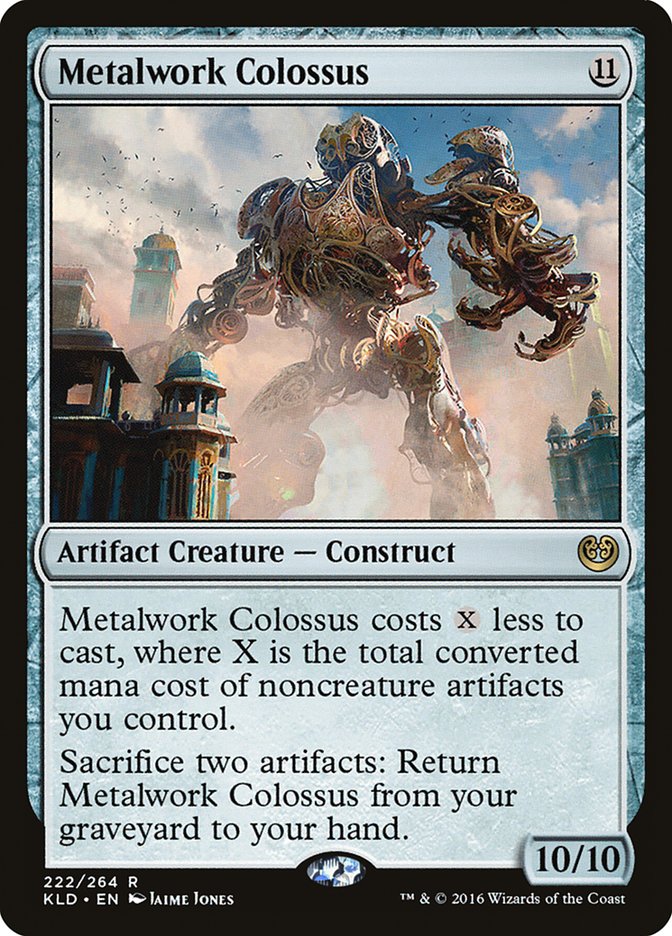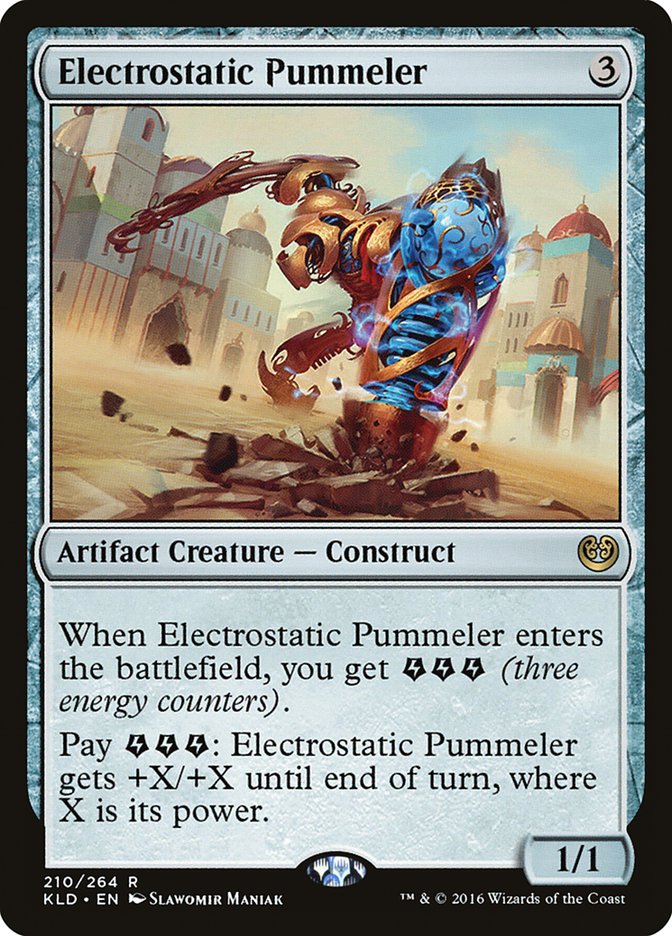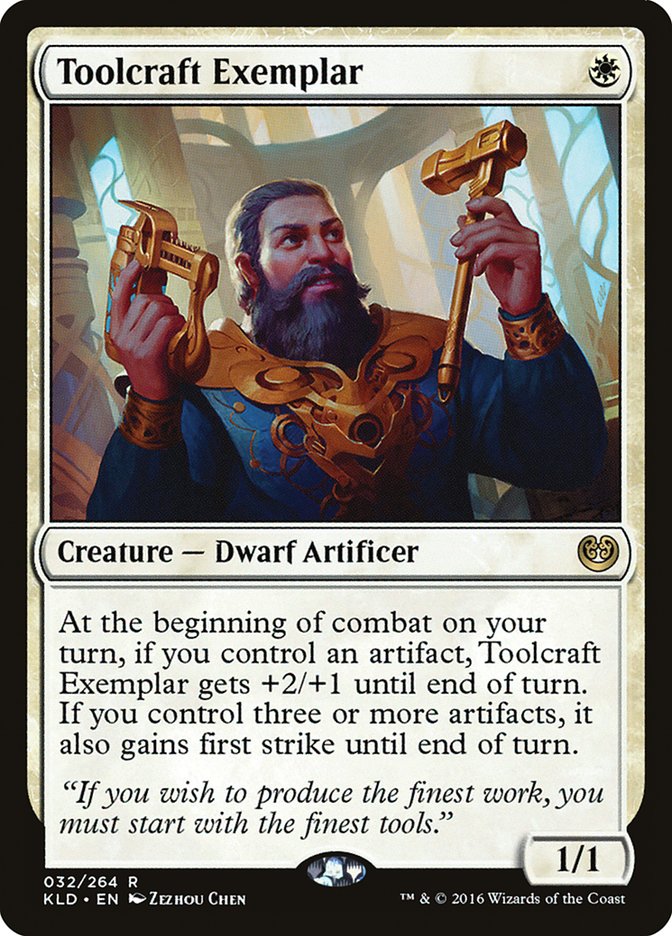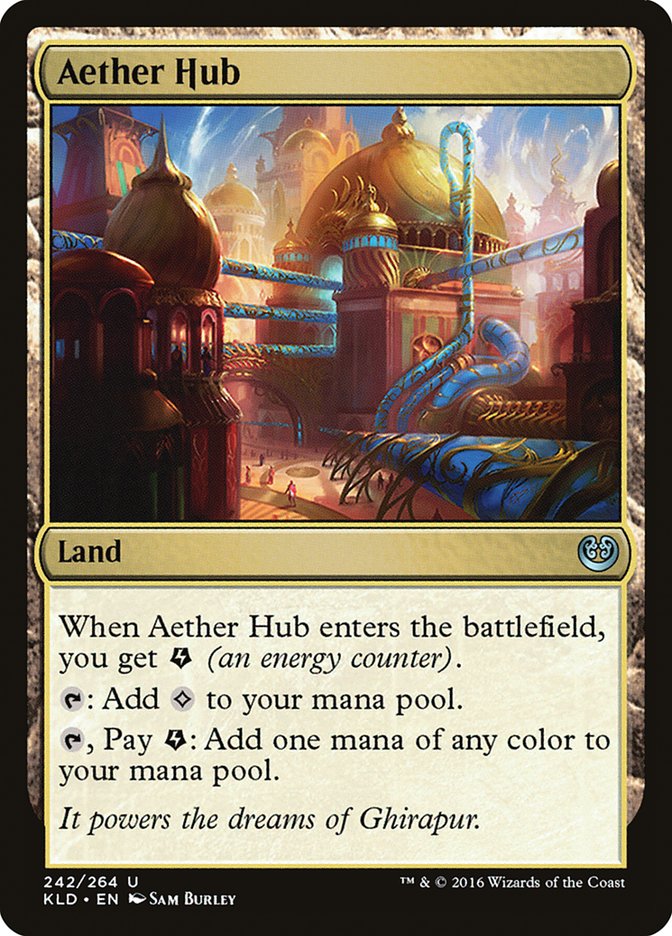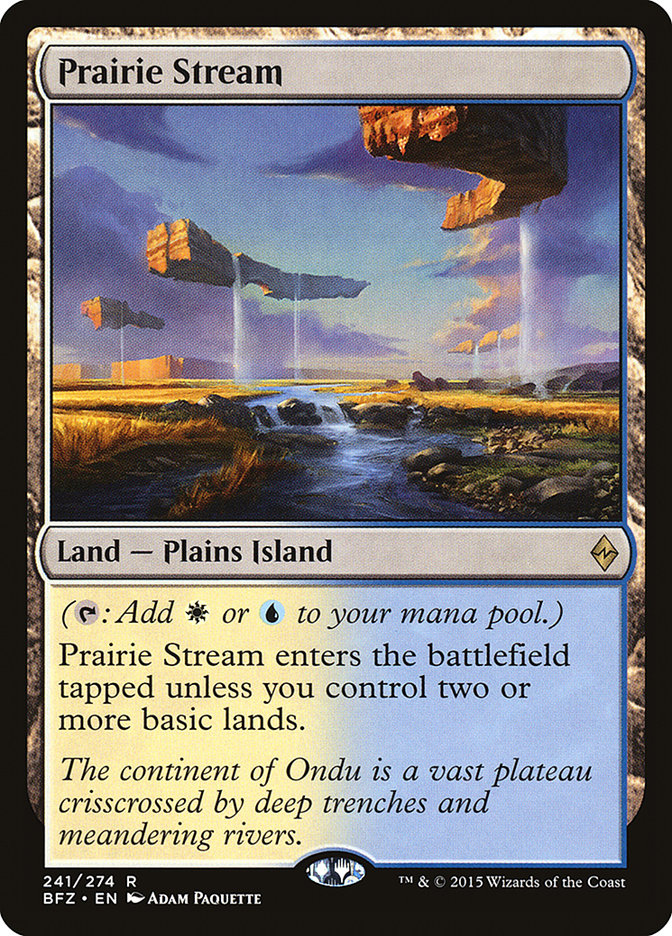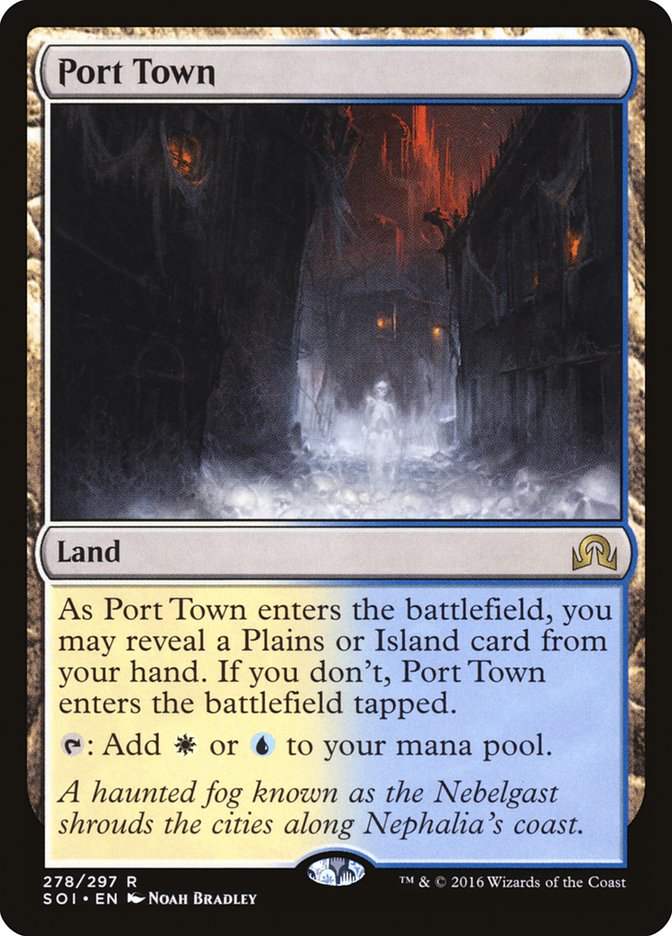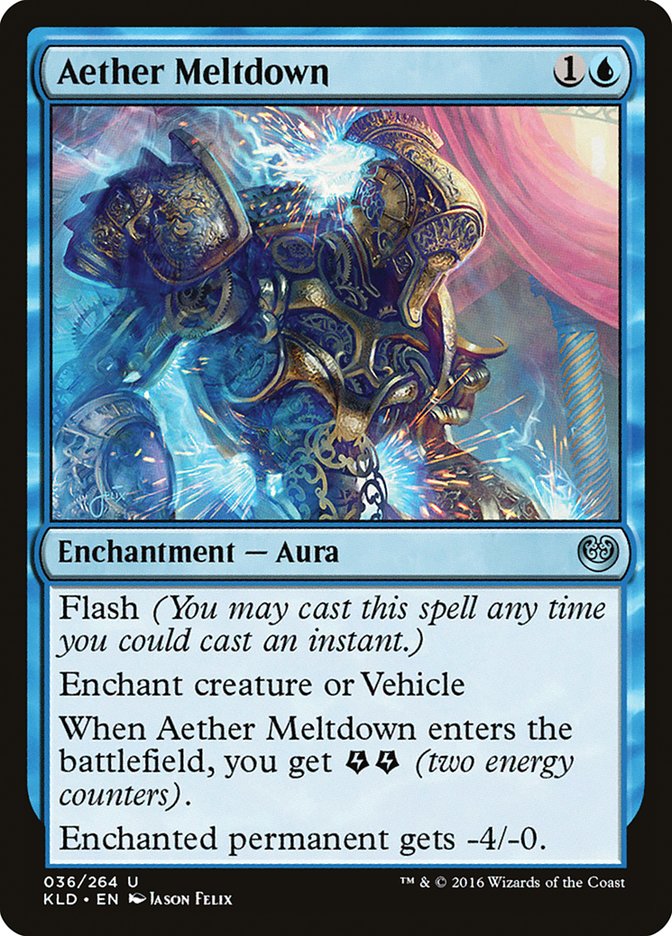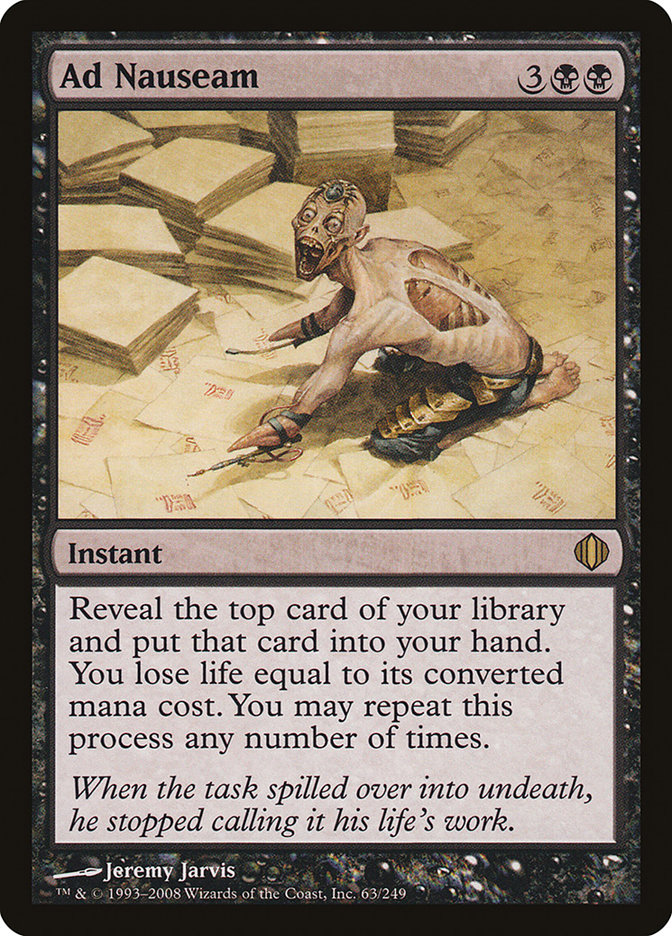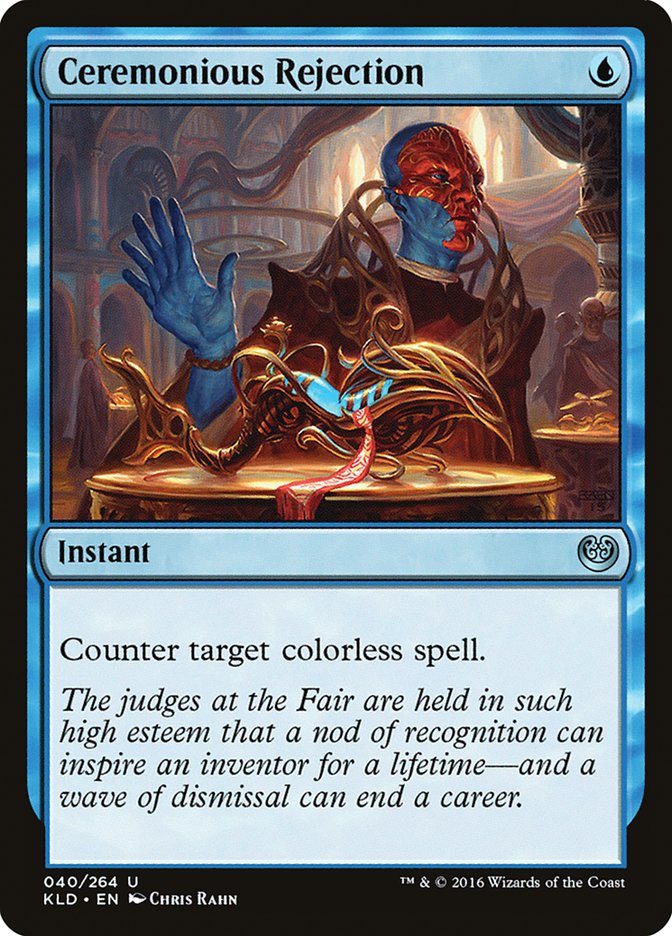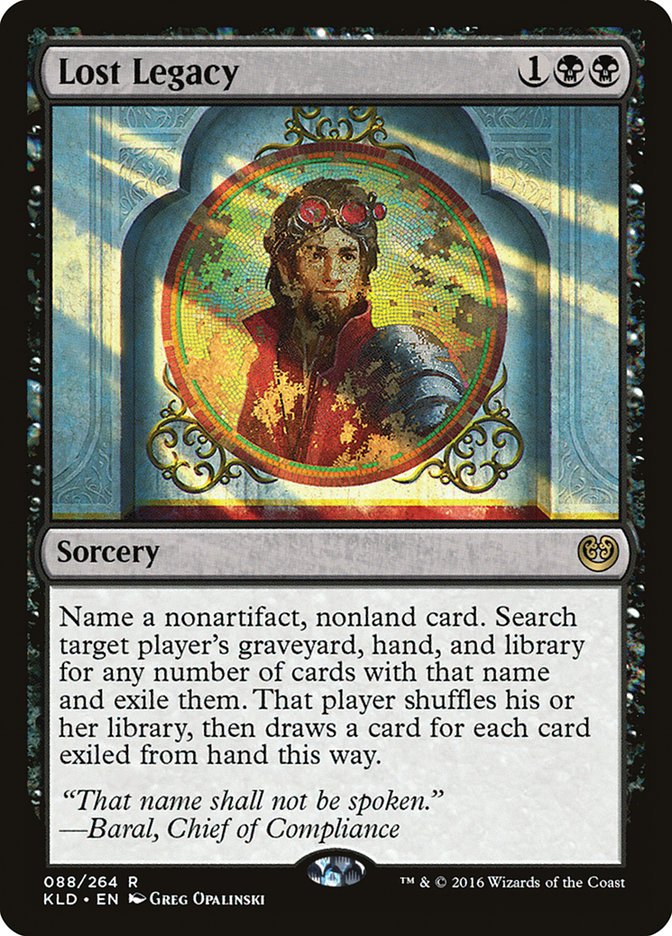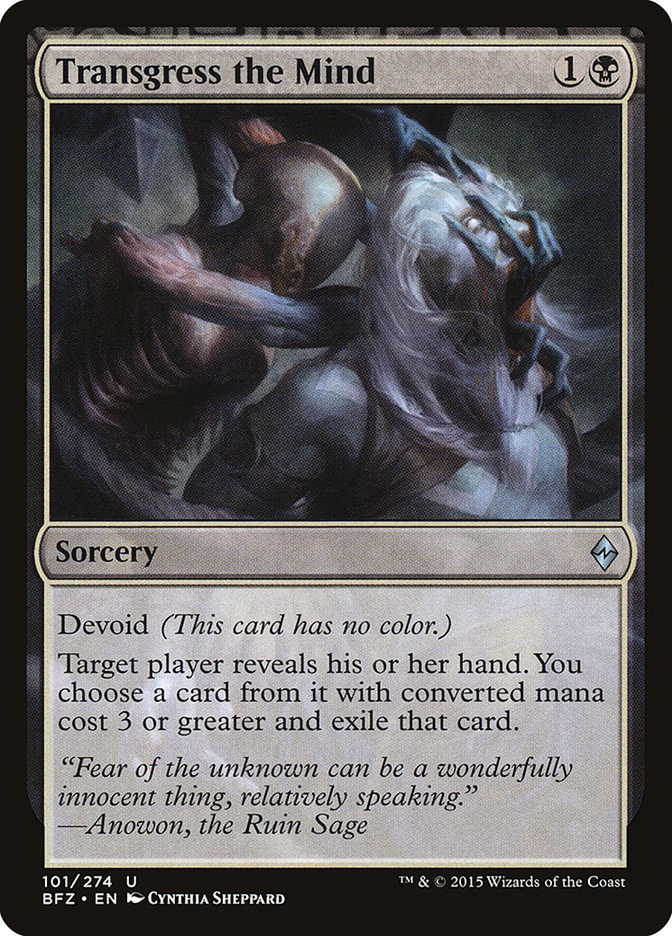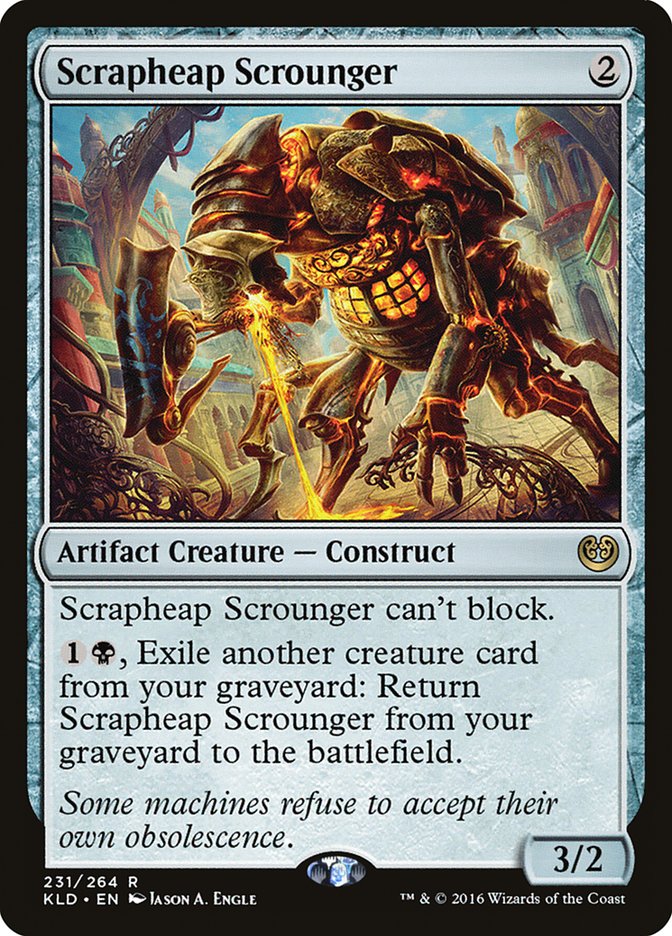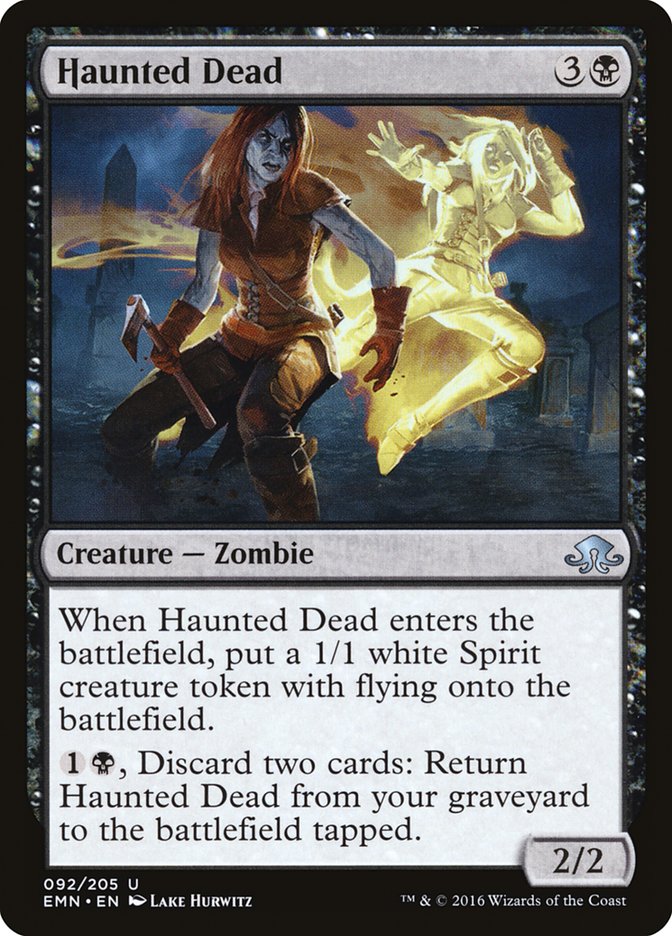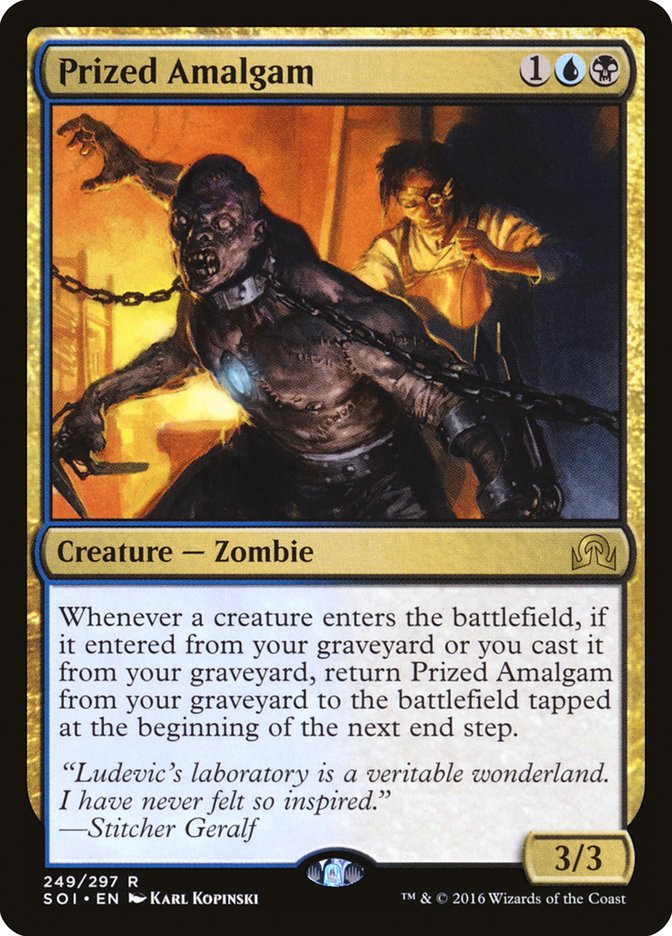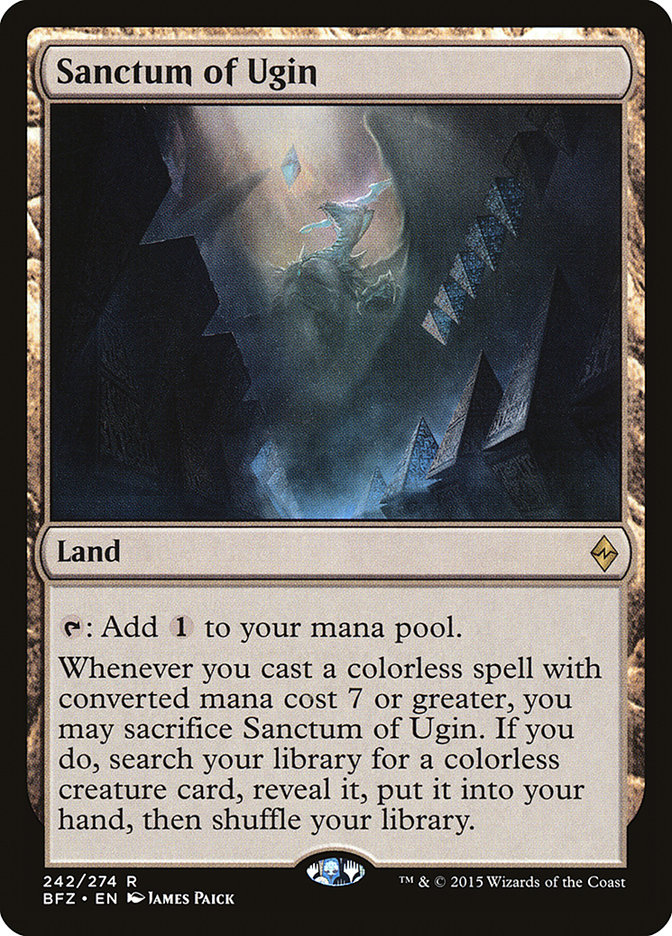The results of Pro Tour Kaladesh look like a bizarro-world version of what we saw at the SCG Standard Open in Indianapolis. Tons of control when control was laughable two weeks ago? But there are still a ton of W/R Vehicles decks. Except one of them just randomly has blue for sideboard cards? And that’s a Spell Queller deck, which looked completely unplayable in a world of red removal and hyper-aggressive decks.
More than specific archetypes, what actually happened? What matters in this Standard format and what can we expect moving forward?
The Big Picture
Kaladesh Standard by default is extremely proactive.
Part of this is just the Vehicle mechanic. As I explained a couple of weeksago, Vehicles often play out in a very Zendikar fashion where no one actually can block profitably. You play a creature, tap it to Crew your Vehicle, and attack. Everything is tapped and can’t block. If you hold back, you are still short a blocker as someone has to drive the car/helicopter. With Smuggler’s Copter being the defining card in many of the aggro and midrange decks, it is hard to actually play defense unless the plan is playing a bigger threat that completely blanks their battlefield, like Archangel Avacyn.
Part of this is Kaladesh was designed as a set where you get to be an inventor. This basically means that you are going to be paid off for building a crazy linear archetype and that there are a lot of cards in Kaladesh that give you the option to build a dream around them. Just like Modern, this means that it becomes hard for a control deck to cover everything at once. Not impossible, but hard by default.
Aside from what we saw at Pro Tour Kaladesh, there is also a lot of reach in Kaladesh Standard. There are cards like Key to the City or Fevered Visions that make a bulky “stabilize the battlefield and take a little bit to win” midrange strategy really hard to pull off.
The Mana
Once you get down to it, the mana in Kaladesh Standard isn’t that difficult to figure out. Short version: enemy-color and wedge (Jeskai, Temur) mana is great, while allied-color and shard mana (Jund, Grixis) sucks. On one side you get creature-lands and untapped two-color lands. On the other you get some of the clunkiest mana I have ever seen.
Remember: proactive. This isn’t Shadows over Innistrad Standard. You want to be casting your Wild Nacatl– or Kird Ape-sized creatures early and curving out, not missing on your one- and two -drop 40% of the time because you drew two Smoldering Marsh or something similar.
The final nail in the coffin is Aether Hub. Even if you can’t make other Energy, Aether Hub is a strong contender as a land to smooth out your early mana, and if you can, it gets very close to a painless five-color land. If you can use the Energy for something, it gets absolutely absurd. A five-color land that gives you value if you didn’t need it? Sign me up immediately!
Except Aether Hub is a horrific nonbo with both of the allied-color land cycles because it isn’t a basic land. Not only does your allied-color deck have awkward mana to begin with, you are almost hard-capped at eight good two-color lands due to this. Evolving Wilds is a significantly worse third wheel.
Creatures (6)
Planeswalkers (1)
Lands (26)
Spells (27)

As opposed to pure allied-color mana, shards do have some room to play with their sources, but there’s real cost here. Shota’s mana requires him to play thirteen “basics” for Smoldering Marsh and Sunken Hollow, which in turn means he has to play Evolving Wilds. With four tapped lands to start and the potential of Battle lands to be tapped, he can only play two copies of Wandering Fumarole. His deck is also skewed towards one- and two-mana spells to make up for the games where he is behind a mana for the first couple of turns. If the format moved to a place where you needed more hard removal instead of or in addition to Galvanic Bombardment, this strategy would likely have major issues.
Creatures (5)
Planeswalkers (2)
Lands (26)
Spells (27)

Now compare the Grixis mana to Carlos Romao’s Jeskai mana. Carlos has some of the base allied-color issues with Port Town, but the red mana is a complete freeroll. He basically gets paid four Wandering Fumaroles to add the color to his manabase and then gets spells that are good on top of that. Shota has to play four Evolving Wilds to make his mana work. Carlos gets to play four copies of Aether Hub and make his mana better. He also gets to lean harder on three-mana answers like Stasis Snare, which allow him more flexibility against things like a resolved Eldrazi Titan.
Creatures (12)
Lands (22)
Spells (26)
- 3 Kozilek's Return
- 2 Vessel of Nascency
- 3 Contingency Plan
- 4 Aetherworks Marvel
- 4 Woodweaver's Puzzleknot
- 4 Glassblower's Puzzleknot
- 4 Attune with Aether
- 2 Aether Meltdown
Sideboard

Creatures (23)
- 4 Thraben Inspector
- 3 Depala, Pilot Exemplar
- 4 Scrapheap Scrounger
- 4 Toolcraft Exemplar
- 4 Inventor's Apprentice
- 4 Veteran Motorist
Planeswalkers (2)
Lands (22)
Spells (13)

Then there are the extremes. If you don’t care about playing high drops because your opponent should just be dead, you can get away with a lot. Between Aether Hub and fastlands, you can make three colors of untapped early mana easily and four is only a slight stretch. A couple of them have to be just light splashes, but you get access to a lot of good effects.
This is a huge deal. Bad mana kills decks. Good mana makes decks. Don’t build bad mana.
Aetherworks Marvel Is Borderline Broken
Aetherworks Marvel looked like a flashy strategy at the SCG Standard Open in Indianapolis but failed to crack the elimination rounds. What changed between then and Pro Tour Kaladesh that led a fifth of the field, including Team CFB, The Pantheon, and Team East-West Bowl, to play the deck?
One big gain was Contingency Plan as an upgrade to Vessel of Ephemera. Simply costing two mana as opposed to one to cast and two to activate is huge, and seeing an extra card is also a big deal. Contingency Plan can also be used to leave an Eldrazi Titan on top to ensure an Aetherworks Marvel activation is successful.
The other huge upgrade is replacing Harnessed Lightning with Aether Meltdown. This one seems super-obvious in retrospect: both of these cards handle the same threats, but one of them puts you up Energy every time you cast it to answer a creature. Instead of a Dark Ritual / Lightning Bolt split card, you just get Swords to Plowshares and Dark Ritual. Easy game.
At the end of the day, the biggest draw to Aetherworks Marvel is that it represents something extremely scary. It is basically stack-based combo. You cast Aetherworks Marvel, it resolves, you activate it immediately, and your opponent is likely facing down a giant hard-to-kill creature with a devastating cast trigger. That isn’t something you see in Magic these days and is something R&D actively tries to avoid. It is broken in the sense that it breaks a ton of rules, and in terms of power level it is definitely close to being something super scary.
Blue and Black Are Keys to the Next Level
There are very specific tools required to counteract stack-based combo. The reason Aetherworks Marvel didn’t just destroy the Pro Tour was that Standard happens to have a few of those tools. They are just isolated to very specific colors.
Counterspells are the number one way to handle Aetherworks Marvel. Ceremonious Rejection might be the single most important card in Kaladesh and is the one that prevents this Standard format from becoming a significantly worse version of Modern with fewer decks and no hate. The thing that ties all the Kaladesh build-arounds together is that they are artifacts, which is almost synonymous with colorless. Ceremonious Rejection not only handles Aetherworks Marvel, it helps shut down all the other Kaladesh nonsense and Eldrazi spread across the format.
Interesting side note: Void Shatter can be countered by Ceremonious Rejection. I would expect a slight move away from that card towards Scatter to the Winds as a result.
A narrower but possibly more devastating card is Spell Queller. The Aetherworks Marvel deck can get into 1997-style counter wars to protect its combo piece from their counters using Dispel and Negate. There simply isn’t a good counterspell answer to Spell Queller, and the movement from Harnessed Lightning to Aether Meltdown doubles down on that.
If you aren’t playing blue spells, black has slightly worse answers. The first Lost Legacy significantly reduces the quality of the Aetherworks Marvel activations, and the second ends it unless they are on the next next level with Kozilek, the Great Distortion or World Breakers.
Pure discard might work but is slightly less effective. Transgress the Mind only really hits Aetherworks Marvel. With Contingency Plan and Glassblower’s Puzzleknot, setting up to draw your Aetherworks Marvel the turn you are casting and activating it is not an uncommon line. Transgress the Mind can be a game-winner, but it is not assured to work the way the other cards listed here are.
What’s Next?
Despite the massive amount of Aetherworks Marvel, the actual breakout deck of Pro Tour Kaladesh was control. Torrential Gearhulk is a dominating finisher, offering a split between flash Mulldrifter and flash Shriekmaw on a body that rapidly ends the game.
How can you next level control and combo at the same time?
Creatures (19)
Planeswalkers (2)
Lands (22)
Spells (17)

One way is just jam on both. Makis Matsoukas was regularly putting opponents to five or less on turn 3 with Reckless Bushwhacker and a sea of one-drops. Control decks will have issues with your best draws, while Aetherworks Marvel will struggle to race them.
I’m also very interested in Scrapheap Scrounger strategies. That card is obnoxious for control to deal with while also representing a relatively fast clock for combo in a color that has access to disruption.
If I really wanted to bury both control and combo, I would look into the Grixis Emerge list that Kentaro Yamamoto beat me with in Round 7. The Prized Amalgam engine handles the control half and is shockingly Ulamog-proof, while the Elder Deep-Fiend and sideboard countermagic handles the combo half fairly well. You even have Kozilek’s Return to stymie aggro decks.
Creatures (19)
- 4 Prized Amalgam
- 4 Wretched Gryff
- 4 Elder Deep-Fiend
- 4 Haunted Dead
- 2 Advanced Stitchwing
- 1 Scrapheap Scrounger
Lands (24)
Spells (17)

I’m also conditionally interested in Metalwork Colossus decks. If the format turns towards answers, Sanctum of Ugin and Metalwork Colossus dodge Lost Legacy and play right through Ceremonious Rejection. If the format turns towards racing those decks, I would stay far away from the slightly clunkier combo deck.
Overall, I don’t expect the format to look quite like this for much longer. Simply put, there are too many things to be doing in this format for any one of them to stay on top without being broken, especially when there are so many clutch answers. The gameplay aspect might suffer a bit from nonsense like Aetherworks Marvel games, but at the least things are going to be interesting.



